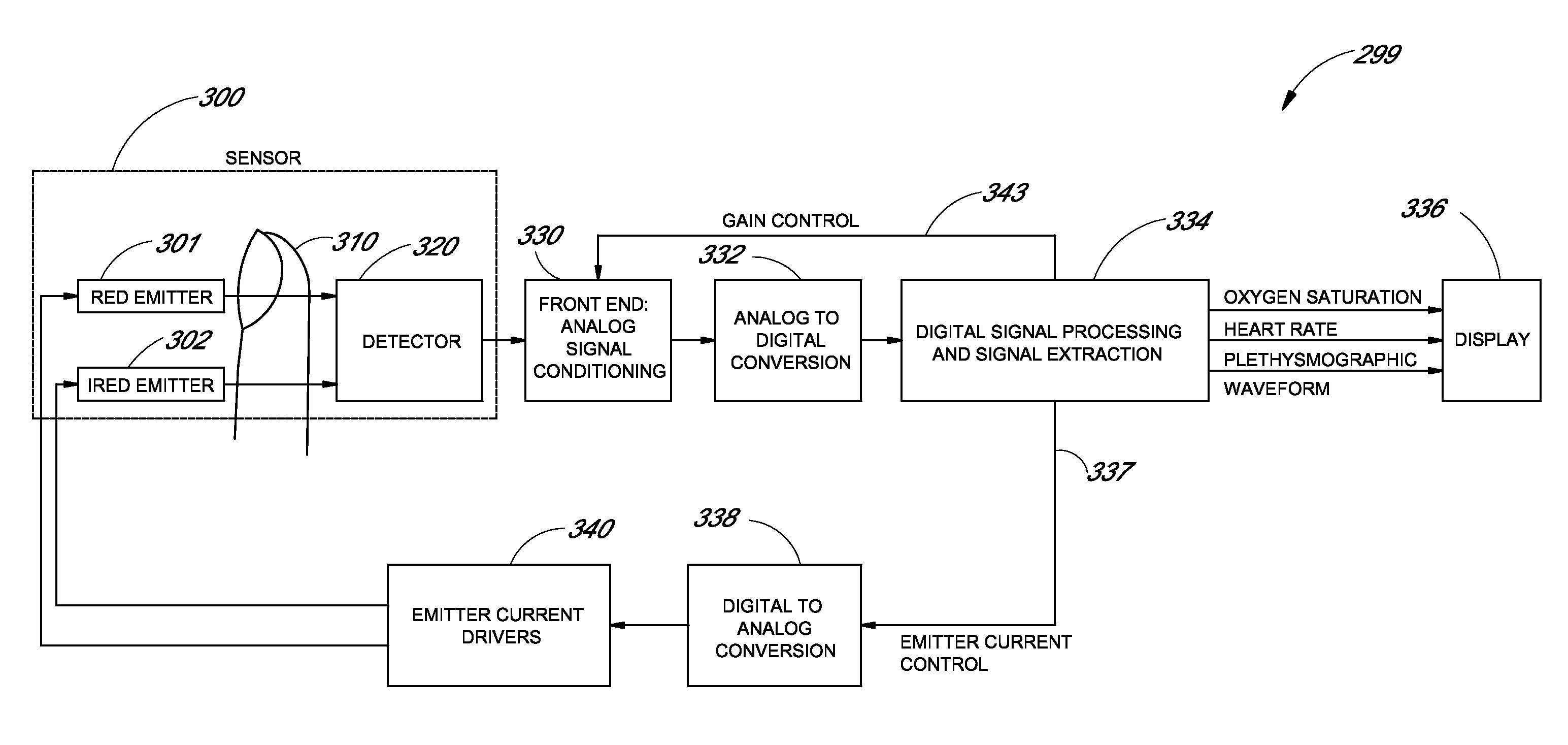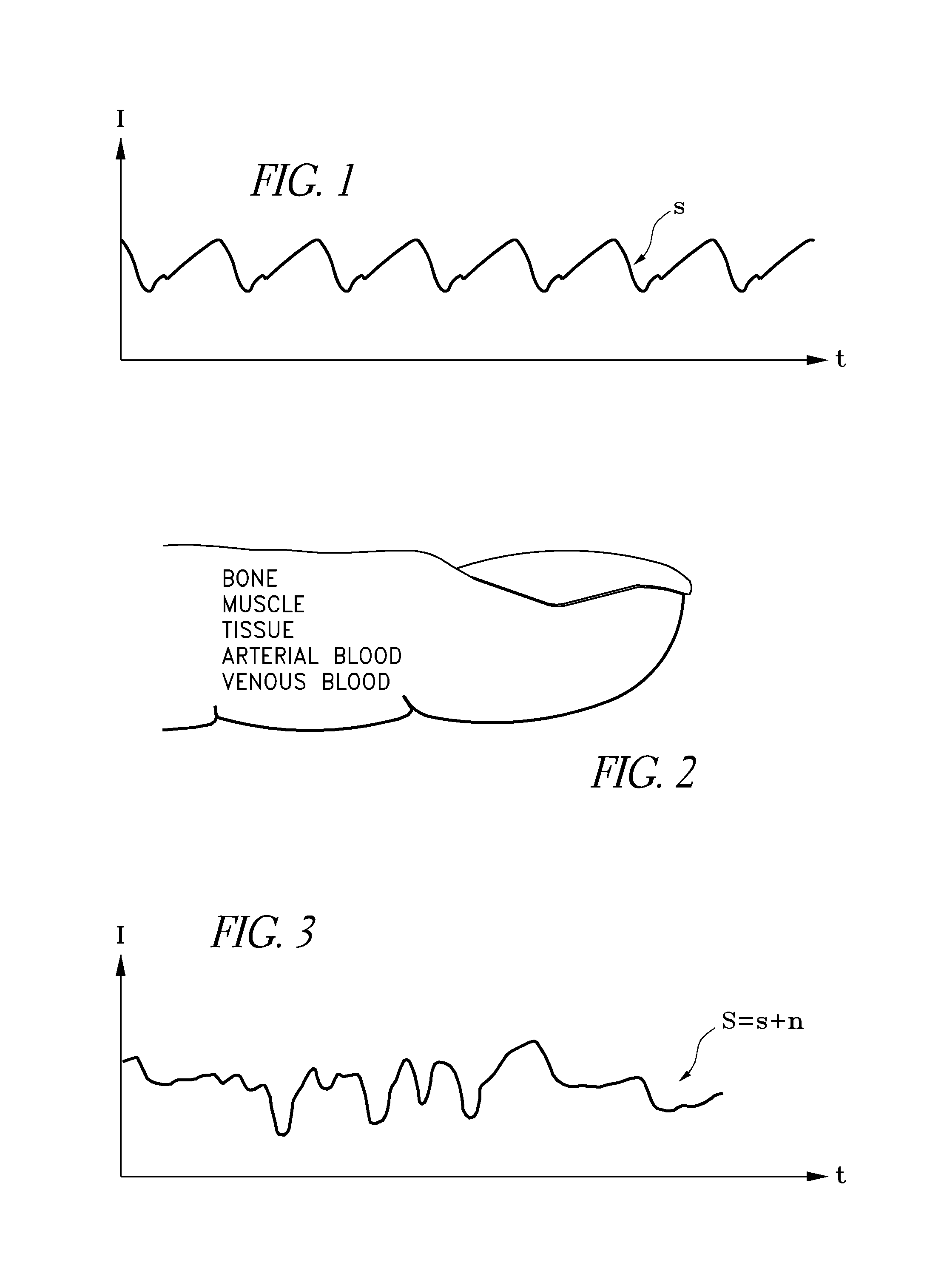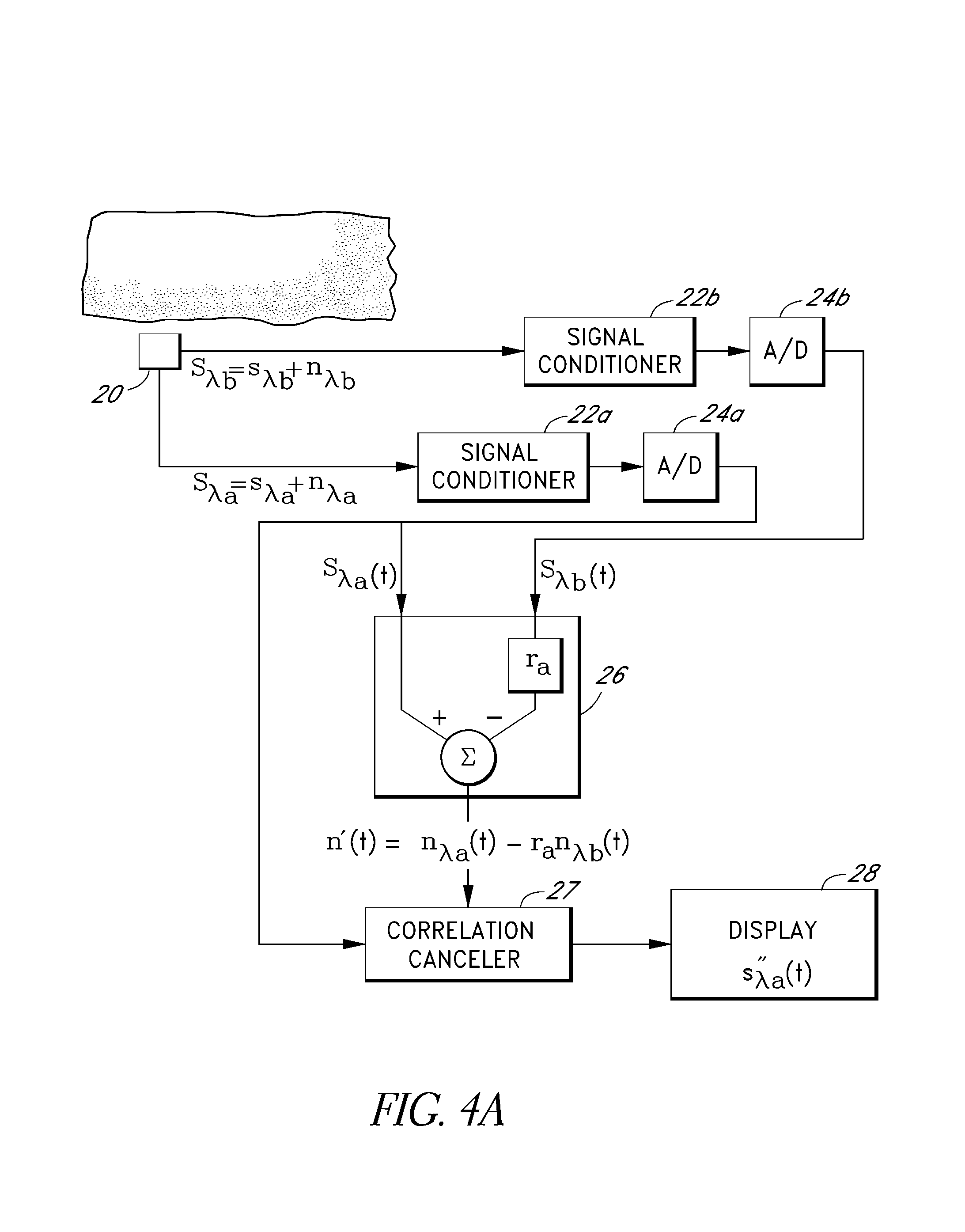Signal processing apparatus
a technology of signal processing and signal processing, applied in the field of signal processing, can solve the problems of distorting the measured signal, erratic energy attenuation, and ineffective conventional filtering techniques in extracting either primary or secondary signals
- Summary
- Abstract
- Description
- Claims
- Application Information
AI Technical Summary
Benefits of technology
Problems solved by technology
Method used
Image
Examples
Embodiment Construction
[0075]The present invention involves a system which utilizes first and second measured signals that each contain a primary signal portion and a secondary signal portion. In other words, given a first and second composite signals S1(t)=s1(t)+n1(t) and S2(t)=s2(t)+n2(t), the system of the present invention can be used to isolate either the primary signal portion s(t) or the secondary signal portion n(t). Following processing, the output of the system provides a good approximation n″(t) to the secondary signal portion n(t) or a good approximation s″(t) to the primary signal portion s(t).
[0076]The system of the present invention is particularly useful where the primary and / or secondary signal portion n(t) may contain one or more of a constant portion, a predictable portion, an erratic portion, a random portion, etc. The primary signal approximation s″(t) or secondary signal approximation n″(t) is derived by removing as many of the secondary signal portions n(t) or primary signal portion...
PUM
 Login to View More
Login to View More Abstract
Description
Claims
Application Information
 Login to View More
Login to View More - R&D
- Intellectual Property
- Life Sciences
- Materials
- Tech Scout
- Unparalleled Data Quality
- Higher Quality Content
- 60% Fewer Hallucinations
Browse by: Latest US Patents, China's latest patents, Technical Efficacy Thesaurus, Application Domain, Technology Topic, Popular Technical Reports.
© 2025 PatSnap. All rights reserved.Legal|Privacy policy|Modern Slavery Act Transparency Statement|Sitemap|About US| Contact US: help@patsnap.com



